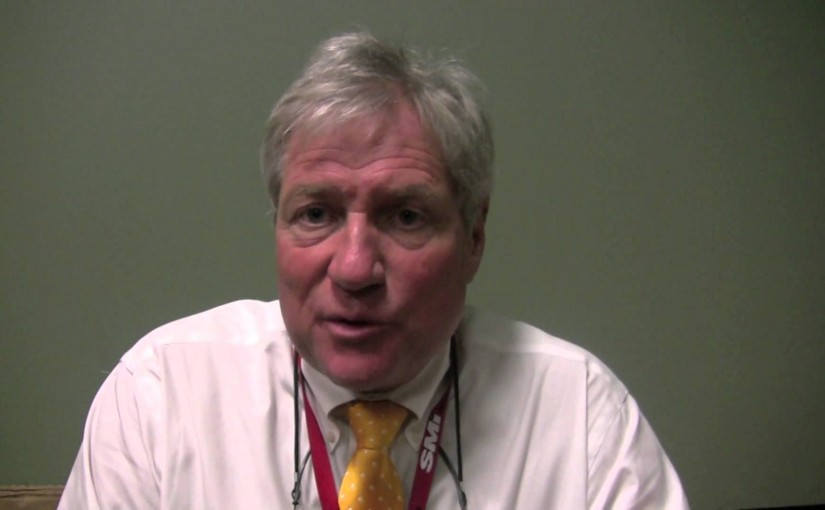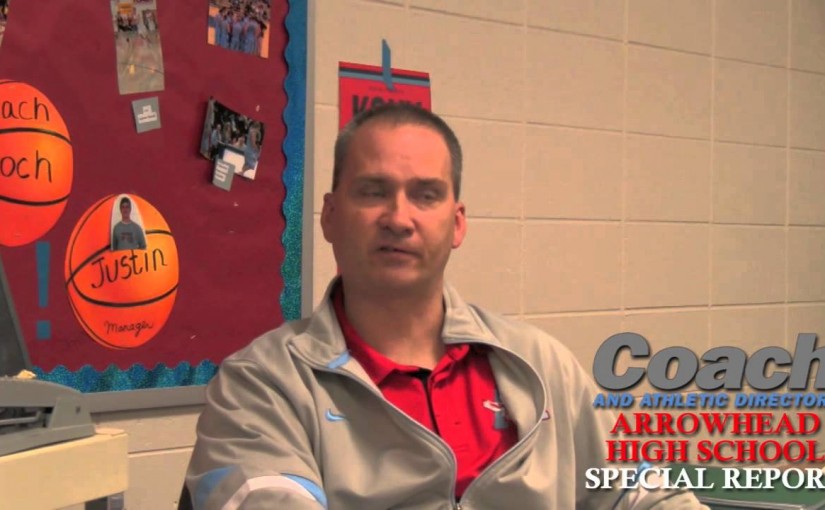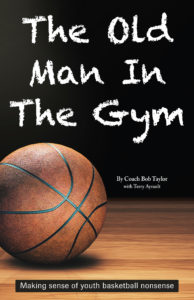Q&A: Old Man in the Gym, Bob Taylor
This winter, longtime basketball coach Bob Taylor published his new book, “The Old Man In The Gym.” The book explores the slow decline of basketball IQ among today’s players, and it identifies a cause: the youth game. Taylor breaks down strategies, drills and lessons to help coaches build basketball players the right way, developing their decision-making skills and overall feel for the game.
In February, Winning Hoops caught up with Taylor to ask him about the book and his ideas to improve the sport. Here’s what he had to say.
Explain the name. What, or who, is the “old man in the gym?”
 I’m calling it a spirit. It’s the way kids learn, that I think they should learn. When I would play growing up, the alumni would watch us play at the park or open gym and they would teach us the “old man’s game.” They would give us tips, but we were playing to try to learn to express ourselves on the court, to play the game. I, in a way, am the “old man in the gym.” I’ve observed the game for 30 years, and observed my kids playing the game. The “old man in the gym” could be anybody that truly cares about helping kids get better.
I’m calling it a spirit. It’s the way kids learn, that I think they should learn. When I would play growing up, the alumni would watch us play at the park or open gym and they would teach us the “old man’s game.” They would give us tips, but we were playing to try to learn to express ourselves on the court, to play the game. I, in a way, am the “old man in the gym.” I’ve observed the game for 30 years, and observed my kids playing the game. The “old man in the gym” could be anybody that truly cares about helping kids get better.
What prompted you to write this? What’s wrong with youth sports?
I think it’s overorganized. We have an overorganized organized sport. The natural way a kid should learn is in the park, in the driveway, playing with neighbors so they can learn what they love about the game. What we changed it to is we now have to get organized by Saturday. We have two practices and have to get organized. So kids are playing a game that’s dictated to them, and it’s really taken the spirit out of the game.
So do you think coaches have become too obsessed with plays and schemes, instead of just teaching players how to react and adapt?
Especially at the youth level where the game is taught, yes. I use this analogy: What if you were a choir director and you had your first concert? The kids never sang before, and you have to get them organized by Saturday. You’d just get the best singer to sing, and the rest would say “doo-wop.” Nobody is allowed to figure out what they like about the game and what they’re good at.
You write a lot about your friend Don Meyer. How would he view youth sports today?
I think he would be on the same page. I talked to him at the end, and I told him I think his camps would have to change now because people that used to go to Don’s camp were die-hard basketball players. They were players who were learning from the hardcourt, and he would add the fundamentals.
You talk about parents having a role. What’s their responsibility?
I think the parents and the youth coaches are key. Where they put their kid will determine the kid’s success.
We allow kids to walk down the court, but we don’t allow them to practice with enthusiasm. We have them at the youth level at a key age. We have them where we can put in work ethic, drive and motivation. We have to competing and enjoy trying to get better.
The game is taught at the youth level, and their introduction to the game is through their youth coach. The parents, they can supplement all of this. You can take your kid and shoot with your kid. How many times do you talk about playing catch in the backyard, or having kids shoot with parents rebounding? I’m trying to bring that back. Enjoy your kid’s journey, and be a part of it. Don’t just be the Uber driver and drop them off.
In what ways should coaches make practices fun?
We want them to be what we call “energy givers,” not “energy takers.” We want them to be a thermostat, not a thermometer. So, we make drills competitive.
We have violations in our practices for not talking on defense, for not being a team. We’ll play to a score so there’s always competition instead of sitting under a basket and learning a drill, when four people are sitting and four are people watching. We try to keep it energized. We’re trying to teach them moves in a competitive situation. We’re trying to teach them subliminally, in a way. If we’re playing cut-throat and a kid is not chinning the ball, we correct them on that but continually play on.
What’s a high school coach’s role in helping youth basketball coaches?
I’m hoping this book turns into a blueprint for a youth coach. If I could be a youth director of a high school program, I really think I could get them to a state championship. We’re missing the biggest part of it.
The problem is a youth coach who has never coached before. Someone steps up who has never coached, so they go to the high school coach to ask what zone to use or what plays to run. The coach is giving them plays they run at the high school level, but that doesn’t fit the market. High school coaches, most times, don’t know what’s going on in fourth or sixth grade. They just know they’re out there playing.
This book would be a real value for a high school coach to say, “We want to help these kids learn the skills that are going to make them be a good high school player.” That’s why I say every grade has to be more important. We’re building the player toward the high school team.
What’s the biggest lesson you want youth coaches taking away from your book?
That the youth coach should be the person who helps the player along to their destination. We put in the book the lesson of the horse. This is the book that would help the individual come back and say, “I owe my career to this youth coach. This person made a difference in my life. They put me on a road less travelled, and it was by far the best thing that happened.”
The Old Man In The Gym by Coach Bob Taylor is available for purchase in the Winning Hoops store.








